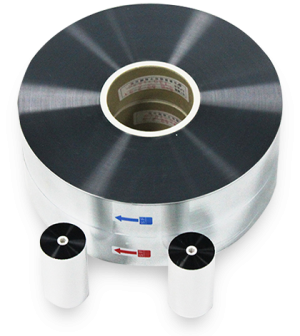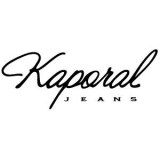Saifu Capacitor Film and Capacitor Wholesale
The metallized polypropylene film capacitor bulk produced by Anhui Saifu Electronics Co., Ltd. is a capacitor formed by winding polypropylene film as the dielectric and the zinc-aluminum metallized layer by physical vapor deposition as the conductive plates. This kind of capacitors for sale has the characteristics of non-polarity, stable capacitance, small loss tangent, small ESR and ESL, reasonable size, and self-healing.This capacitor wholesale can be used in AC and DC occasions in industrial and civil fields, such as DC -Link, DC filter, DC pulse, AC motor, household appliances, low voltage compensation, AC filter, lamps, etc.
Different Types Of Capacitors & Capacitors Film
Metallised Capacitor Film
The capacitor main material is capacitor film, contain Metallised polypropylene film, metallised polyester film and plain film for capacitor use. According to customers requirement produce.
Metallised Polypropylene Film (MPP Film)
Metallised Polyester Film (MPET film)
Plain Film For Capacitor
Capacitor Working Principle
A capacitor consists of two conductive plates separated by a dielectric. The opposing surfaces of the two conductive plates can hold equal and opposite charges and create an electric field. The dielectric of Saifu's capacitors is polypropylene film, and the conductive plate is metallized layers (zinc-aluminum or pure aluminum layers) by physical vapor deposition (vacuum evaporation). For ease of use, two or more layers of metallized film with lengths of several meters to thousands of meters are wound into capacitor elements. Saifu's capacitors are composed of single to hundreds of capacitor elements according to capacitor specifications.
Multilayer Ceramic Capacitor Manufacturing Process
The manufacturing process of multilayer ceramic capacitors (MLCCs) generally involves the following steps:
Mixing: The raw materials, which typically include ceramic powders, metal oxides, and binders, are mixed together in a ball mill to form a homogeneous slurry.
Forming: The slurry is then poured into a mold or cast onto a tape, which is then cut into individual chips of the desired size and shape.
Drying: The formed chips are dried in a drying oven to remove any remaining moisture from the slurry.
Firing: The dried chips are then fired in a high-temperature furnace to sinter the ceramic and metal oxide powders into a solid, crystalline structure. This process also burns off the organic binders, leaving behind a pure ceramic material.
Electrode deposition:Once the chips have been fired, metal electrodes are deposited onto the ceramic surface using a variety of techniques, such as screen printing or sputtering.
Stacking: The chips are then stacked on top of each other, with each layer separated by a thin layer of insulating material, typically made of ceramic or glass.
Terminations: The final step is to add terminations to the ends of the stacked chips, which allow the capacitor to be connected to a circuit. The terminations can be added using a variety of techniques, such as plating or wire bonding.
After the terminations are added, the multi layer ceramic capacitors are tested to ensure that they meet the required electrical specifications. This may involve measuring parameters such as capacitance, voltage rating, and dielectric constant. Once the multilayer capacitors pass the quality control tests, they are packaged and shipped to customers.
Capacitor Design
Capacitor design involves several considerations to ensure that the custom capacitor meets the required specifications for a given application. Here are some of the key design considerations for capacitors:
Capacitance: The capacitance is the most fundamental capacitor parameter for a capacitor, and it determines the amount of charge that the capacitor can store for a given voltage. Capacitance is determined by the physical dimensions of the capacitor, the dielectric material, and the electrode material.
Voltage Rating: The voltage rating specifies the maximum voltage that a capacitor can withstand without breaking down. The voltage rating is determined by the dielectric strength of the material used in the capacitor, as well as the thickness of the dielectric layer.
Size and Shape: The size and shape of the capacitor can have a significant impact on its performance and suitability for a given application. For example, surface mount capacitors are designed to be mounted directly onto printed circuit boards, while axial lead capacitors are designed to be inserted into through-hole mounting.
Temperature Coefficient: The temperature coefficient of a capacitor describes how the capacitance changes with temperature. This is an important consideration for applications where the temperature may vary significantly, as the capacitance can drift and affect the performance of the circuit.
ESR and ESL: Equivalent series resistance (ESR) and equivalent series inductance (ESL) are parasitic effects that can occur in capacitors, which can affect the performance of the capacitor in high-frequency applications. It is important to choose a capacitor with low ESR and ESL for high-frequency applications.
Dielectric Material: The choice of dielectric material can have a significant impact on the performance and characteristics of the capacitor. Some common dielectric materials include ceramic, tantalum, aluminum electrolytic, and film.
Tolerance: The capacitance tolerance specifies how closely the actual capacitance of the capacitor will match the specified capacitance. Tolerance is an important consideration for precision applications where tight tolerances are required.
These are just a few of the key capacitor design considerations. The capacitor design process will typically involve a thorough analysis of the specific requirements for the application, including electrical specifications, environmental factors, and cost considerations, among other factors.
Capacitor Material
Capacitors can be made using a variety of dielectric materials, which are chosen based on the specific requirements of the application. Here are some common capacitor materials and their properties:
Ceramic: Ceramic capacitors use a ceramic material as the dielectric, and are commonly used in a wide range of applications due to their low cost and stability over a wide range of temperatures. Ceramic capacitors are available in a variety of shapes and sizes, including surface-mount and through-hole configurations.
Tantalum: Tantalum capacitors use a tantalum metal as the anode material and are often used in applications where high stability and low leakage are required. Tantalum capacitors are available in both surface-mount and through-hole configurations.
Aluminum Electrolytic: Aluminum electrolytic capacitors use an aluminum oxide film as the dielectric and are commonly used in high-voltage and high-capacitance applications. They are available in both radial and axial lead configurations.
Film: Film capacitors use a thin film of metal or metalized polymer as the dielectric, and are commonly used in high-frequency and high-precision applications. They are available in a variety of shapes and sizes, including surface-mount and through-hole configurations.
Paper: Paper capacitors use a paper or plastic film as the dielectric and are commonly used in vintage audio equipment due to their warm sound characteristics. However, paper capacitors are rarely used in modern applications due to their relatively large size and limited capacitance range.
Mica: Mica capacitors use a mica material as the dielectric and are commonly used in high-frequency and high-precision applications due to their excellent stability and low losses. However, mica capacitors are relatively expensive and are not commonly used in high-volume production.
These are just a few of the most common capacitor materials. The choice of capacitor material will depend on the specific requirements of the application, including factors such as capacitance range, voltage rating, temperature range, stability, and cost.
Capacitor Selection
Selecting the right capacitor for a specific application involves considering a variety of factors, including capacitance, voltage rating, temperature range, frequency range, size, and cost. Here are some general guidelines for selecting capacitors:
Capacitance: Determine the required capacitance based on the needs of the application. This can be done by calculating the required capacitance from the circuit's time constants or by consulting the manufacturer's datasheet.
Voltage Rating: Choose a capacitor with a voltage rating that is greater than or equal to the maximum voltage in the circuit.
Temperature Range: Choose a capacitor that can operate over the temperature range required for the application. Some capacitors are rated for extended temperature ranges, while others may be more limited.
Frequency Range: For high-frequency applications, choose a capacitor with a low equivalent series resistance (ESR) and equivalent series inductance (ESL) to minimize parasitic effects.
Size: Choose a capacitor that is physically compatible with the circuit board or enclosure, and that meets any size or space constraints.
Cost: Consider the cost of the capacitor relative to other components in the circuit, and choose a capacitor that meets the required specifications while fitting within the budget.
It's important to note that selecting the right capacitor for a given application can sometimes involve trade-offs between these factors. For example, a capacitor with a higher capacitance may be physically larger and more expensive, while a capacitor with a smaller size may have higher ESR and ESL. Careful consideration of these factors is necessary to select a capacitor that meets the needs of the application without sacrificing performance or cost efficiency.
What is a Capacitor Used for?
As a professional film capacitor manufacturer, Saifu's capacitor can be used in AC and DC occasions in industrial and civil fields, such as DC-Link, DC filtering, DC pulse, AC motors, household appliances, low voltage compensation, AC filtering, lamps, etc.
Dc-link Capacitor
Utilizing the feature that the voltage of capacitors cannot change suddenly, it is used in inverters such as photovoltaics, wind energy, electric vehicles, and high-speed railways to support the voltage and filter out the ripple caused by the rapid conversion of IGBTs.
DC and AC filter capacitors
Using the characteristics of capacitors to isolate DC from passing AC, filter out high-frequency harmonics in the circuit, and are used in high-frequency inverter welding machines, power supplies, power grid harmonic control, SVG, IGBT absorption and other fields.
Dc Pulse Capacitor
The energy stored in the capacitor is released in a very short period of time, and can be reused many times. This capacitor for sale is used in magnetizers, demagnetizers, scientific research, geological exploration, electromagnetic guns, laser guns and other fields.
Ac Motors and Household Appliances Capacitors
When capacitors are used normally under AC power, the voltage phase lags behind the current phase by nearly 90° (π/2). This feature can be used to start the AC motor. Capacitors are reactive components, which are used in the operation of AC motors and household appliances, which can improve the power factor and improve the energy efficiency level. Capacitor wholesale can be used on AC motors, power tools, water pumps, air conditioners, washing machines, refrigerators, fans, dishwashers, induction cookers, etc.
Low-voltage Compensation Capacitors
In the power distribution room, reactive power compensation and power factor correction are performed.
Lamp Capacitors
Start-up and stable operation of lamps.
Why choose Saifu as your capacitor wholesale supplier?
Saifu is a professional capacitor manufacturer and supplier with over 20 years of experience in the industry. We offer a wide range of high-quality capacitors, including film capacitors, electrolytic capacitors, ceramic disk capacitors, and motor capacitors like the CBB60 motor run capacitor with 2 wires.
Quality
Saifu produces high-quality capacitors that meet international standards and have been certified by various quality control organizations. Our capacitors for sale are reliable, durable, and have a long service life.
Competitive Pricing
Saifu offers competitive pricing for our products, which may allow you to save money on your capacitor purchases.
Customization
Saifu can customize capacitors to meet your specific requirements. We have a team of experienced engineers who can design and produce OEM capacitors according to your specifications. Our custom capacitors can fully meet your needs.
Fast Delivery
Saifu has a large production capacity and can deliver orders quickly. We have a logistics team that can arrange shipping to any destination worldwide.
Customer Service
Saifu has a responsive and knowledgeable customer service team that can provide technical support and answer any questions you may have about our products.
Capacitor Wholesale FAQs
Products
What are the most common film capacitors?
Film capacitors are capacitors that use a thin plastic film as the dielectric. The most common types of film capacitors are: Polyester Film Capacitors (Mylar Capacitors), Polypropylene Film Capacitors, Polycarbonate Film Capacitors, PTFE Film Capacitors and Metalized Film Capacitors. Overall, film capacitors are a popular choice for various electronic applications due to their excellent stability, low cost, and wide range of capacitance values and voltage ratings.
Do film capacitors sound better than electrolytic?
Whether film capacitors sound better than electrolytic capacitors or not depends on the specific application, the design of the circuit, and the preferences of the listener.
Film capacitors are known for their high stability, low distortion, and low dielectric absorption, which can make them a good choice for audio applications where accuracy and stability are important. They also have a wide range of capacitance values and voltage ratings, which can make them more versatile in some designs.
Electrolytic capacitors, on the other hand, are known for their high capacitance density, which makes them a good choice for applications where a large amount of capacitance is required in a small space. They are also more affordable than film capacitors and can be used in many applications where their performance is adequate.
What's the principle of Film Capacitors?
Film capacitors are a type of capacitor that uses a thin plastic film as the dielectric. The principle of operation of a film capacitor is based on the fundamental principle of a capacitor, which is the ability to store electrical energy in an electric field.
Persona a contactar : Chen Vivien, 0562 2828238
Buen trato: comprar del vendedor
Por favor, lea nuestras condiciones de uso. También puede visitar nuestras preguntas frecuentes y ver nuestra información sobre los riesgos relacionados con la falsificación.
|
Esta página es acerca de los importadores y exportadores de Saifu Capacitor Film and Capacitor Wholesale Buscar en la categoria : B2B Servicios Buscar en la categoria : saifu, film, wholesale, capacitor |
Wednesday 07 January 2026
Palets de devoluciones Action para mayoristas, liquidación profesional y exporta
Cantidad : 30000 - Precio : 0,50 €
Ofrecemos palets de devoluciones compuestos exclusivamente por artículos procedentes de la cadena Action, dirigidos a mayoristas, profesionales del liquidación, revendedores y exportadores. Estos palets de liquidación contienen productos de gran consumo no alimentarios, seleccionados por su alto potencial de reventa y rápida rotación. Detalles de la oferta: - Palets de devoluciones de gran distribución – marca Action - Aprox. 1.000 artículos por palet (80 % de los palets) - Precio medio...
TRANSIDI
- 22440 - PLOUFRAGAN
- 09 72 63 03 26
- 33(0)603670505
Tuesday 06 January 2026
- Buscando una de marcas mayorista - Estamos especializados en la liquidación de existencias de los italianos listos para usar " gama media y alta . Las colecciones del año en curso , suspendido y en ocasiones el año anterior , de acuerdo con nuestra entrega. Todos nuestros productos...
EVIDENCE
- amandinejuel
- 80000 - AMIENS
- 06 13 27 73 23
- +33 6 99 98 81 81
Tuesday 06 January 2026
Cantidad : 3000 - Precio : 25,00 €
LLEGADA KAPORAL JEANS hombre y mujer. pantalones A partir de 25 € ht piezas. Todos nuestros productos son almacén disponible y directo. MYLOOKDISCOUNT es de más de 20.000 productos transformados CADA MES. Estamos especializados en la venta al por mayor y al por menor de prendas de...
webshop
- newlookdiscount
- 13300 - salon de provence
- 09 72 31 67 88













